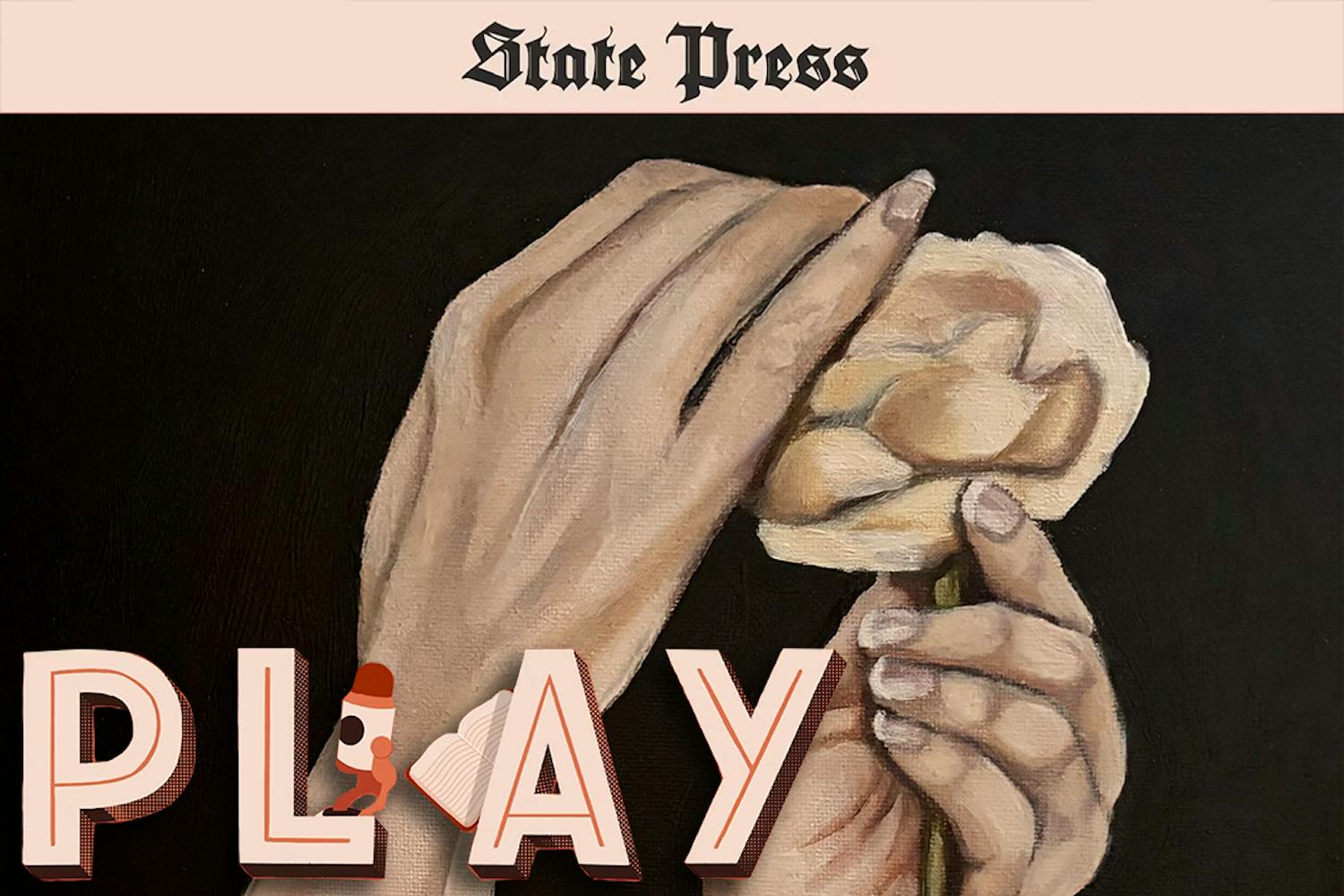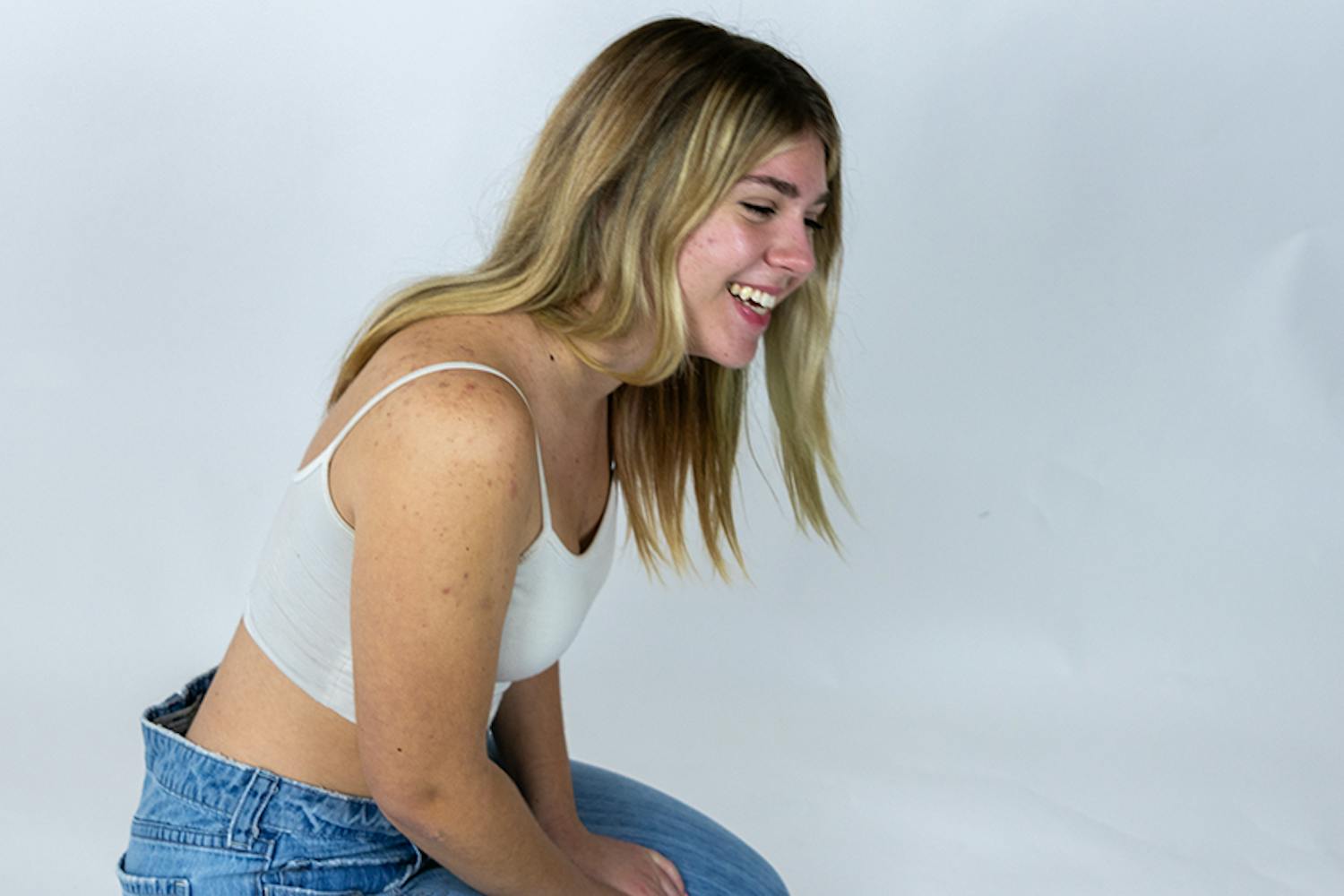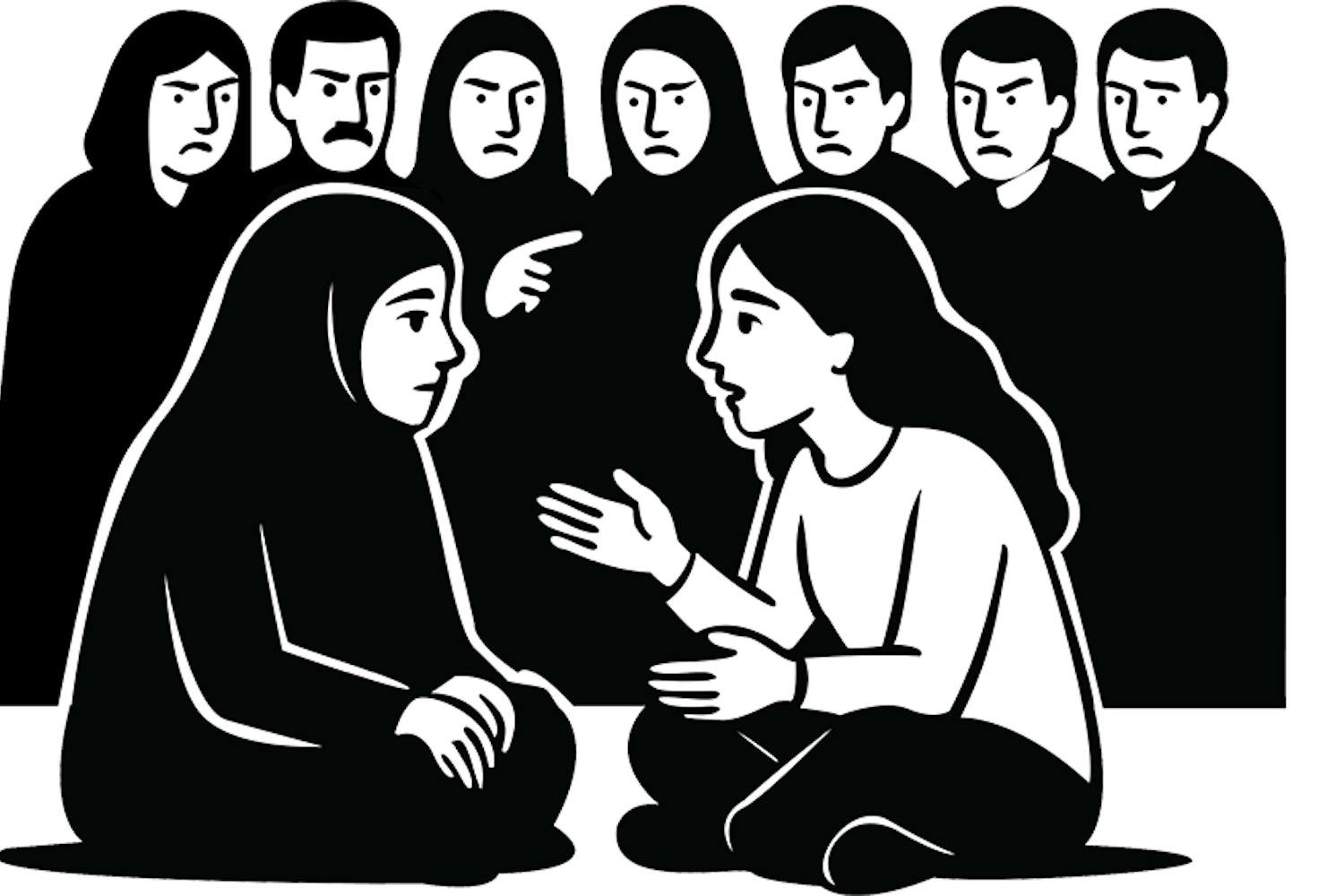Paolo Soleri appears from an unseen corner of the library at Arcosanti and shuffles across the room to takes a seat.
The 84-year-old architect and philosopher shows signs of aging in his wrinkled face, hunched posture, and a slight loss of hearing, although he still exhibits enthusiasm in his persona and the way he sometimes leans back to tip his chair ever so slightly while he taps his foot.
Soleri is visiting Arcosanti- an "urban laboratory" in Mayer, about an hour north of Phoenix - which he designed as a prototype for a new type of urban city, which takes advantage of natural resources while cutting down on urban sprawl and waste. He is there for the weekly School of Thought session, one of the few opportunities that a person has to interact with Soleri and ask questions about his work.
In 1970, ground was broken to build Arcosanti on a 25-acre plot of land that is part of a 4,060-acre land reserve. When complete, Arcosanti would be able to sustain life for 5,000 people, while keeping the natural countryside in close proximity to the dwellers. Currently, there are 75 full-time residents at Arcosanti, plus workshop participants, interns, and volunteers.
Workers and volunteers have spent countless hours to help complete the dream of building Arcosanti. However, due to a lack of substantial funding (the main income comes from the sale of wind bells, ceramics, and food products) and several other factors, time slowly passes by while construction moves on at a similarly slow rate.
The project continues to attract people, mostly students, or those searching for a new experience. They come from around the world and want to proactively help in the creation of Arcosanti. While many of the residents and "workshoppers" (five-week interns) are still optimistic about the completion of the "Project," it is becoming difficult to believe that Arcosanti will ever be finished to fully represent Soleri's original vision.
School of Thought
Soleri takes weekly trips to Arcosanti, a 65-mile trip north of Phoenix, for a two-day stay. Each Wednesday, Soleri spends approximately an hour and a half for the School of Thought; a moderated group discussion among, residents and workshoppers, and anyone else interested in attending.
A different aspect or topic of Soleri's work is discussed each week, with this week's emphasis being on garment architecture. Garment architecture is the idea that a structure should take into consideration climate changes and work with both the natural weather and air-conditioning to create a more harmonious and proficient method of cooling and heating. For example, a shading garment would be installed during the summer to cool areas, while in the winter time a transparent garment would replace the summer garment to allow the sun's natural heat to warm buildings.
Soleri, who received his Ph.D. in architecture from the Torino Polytechnico in 1946 in Italy and immigrated to Arizona in 1947 to study with Frank Lloyd Wright, answers the participants' questions about garment architecture, who listen to him as if he were an oracle. Sometimes he is a little impatient with the questions, but Soleri fully answers each individual's question. By the end of the hour and half session, Soleri quickly leaves the library and retires to his apartment, perched above the library.
At Arcosanti, the idea of garment architecture is utilized to a certain degree, with the various positioning of shades and the extensive use of renewable energy such as the sun and wind.
Garment architecture is a small portion of Soleri's "Arcology" theory. Arcology is the theory of fusing architecture with ecology, and is the basis of Soleri's work in architecture. Arcology proposes the idea of a highly integrated and compact three-dimensional urban form that is the opposite of urban sprawl, with its wasteful consumption of land, energy, time and human resources.
A city built with arcology theory as its basis would need about two percent as much land as a typical city of similar proportion. There would be no reliance on the automobile within a city designed with arcology, which would save land for natural use and cut down on pollution. Using renewable energy resources would also cut down on the dependence on fossil fuels.
Hippie Commune?
Carolyn Campbell, a 23-year-old architecture student, recently participated in an Arcosanti workshop and has decided to stay at the site until next summer. Her five-week workshop consisted of hands-on training in the metal shop, as well as doing tiling for rooms. A participant can take a workshop in the fields of construction, planning, landscaping, agriculture, archives, maintenance, and other field opportunities.
Campbell was accepted to work in the planning department of Arcosanti from January to early summer. Afterward, she plans on going back to school to get a master's degree in architecture and community and regional planning.
Her main focus of work is on the planning of the interior of the new apartments of the EC5 portion of the East Crescent building. Although not directly involved in the design of the apartments, Campbell uses AutoCAD, a architectural computer program, and other equipment to draw schematics of the designs.
When asked why she decided to move to Arcosanti for an extended period of time and what drew her to coming to Arcosanti in the first place, she is enthusiastic.
"I liked the idea of arcology and being more frugal and also the idea of living in a community," Campbell explains. "I grew up in a typical urban sprawl community in Kansas. I think it is very detrimental to people to live in something like that.
"Coming out of the comfort zone, moving 1,500 miles away. I didn't really know what I was getting myself into, but it's part of life and growing. Because of the nature of this place, it's really easy to make friends, like a collegiate atmosphere."
However, Campbell explains that there are several advantages and disadvantages to moving to a more isolated part of the country.
"We are a tight knit group and we have the opportunity to learn to know people faster and on a deeper level and be able to support each other," Campbell describes. "However, on the other hand, if you have a problem with someone you see them all the time and you have to deal with them on an everyday basis. Sometimes you get kind of sick of being around people all the time and you have to take a step back and realize you need to spend some time by yourself."
When she originally left for Arcosanti, Campbell says some of her friends teased her about moving away from a city to a "hippie commune" in the middle of the desert.
"This isn't a hippie commune at all," Campbell says. "People tend to think that. You create what you want. This is an alternative to the rest of the United States, but it's not a hippie commune at all."
Campbell has been actively involved in helping to create EC5 apartments as part of her new position. The new apartments will feature "light scoops," a curved arc ceiling that will harness the sun's light and heat effectively.
Volunteers and other workers have constructed all of the buildings, but Arcosanti recently had to hire help from a third party to help with the problems that the construction crew was having with the crane that is supposed to lift the light scoops into place on the tops of the apartments. A plumbing crew from outside Arcosanti also came in to install bathroom equipment in the new apartments because there wasn't a plumber on site.
Doing the work and construction within the Arcosanti community is one of the things that the Project prides itself on.
Archiving Soleri's Work
If there is one person at Arcosanti that has seen nearly all of Soleri's work through the years, it is Sue Anaya, the archival resource coordinator.
Anaya has been involved with organizing all of Soleri's work and creating copies of the originals so that they may be conserved for years to come. She is also responsible for keeping track and logging all of the publicity that Soleri and Arcosanti receives, as well as recording other types of media such as videos and audio interviews. The toughest task for Anaya is deciphering all of Soleri's work (some of it is written in Italian), a daunting task for anyone. She also keeps track of the current progress of Arcosanti.
"I'm just barely scratching the surface of his work," Anaya says. "I'm learning things every day about (Soleri's) work."
Some of Soleri's sketchbooks that Anaya lately has been archiving are from the '50s and '60s. The sketches show an emphasis on "cosmic potentials," Soleri's first ideas that natural resources could be used for energy.
"(Soleri) has been very active and suggesting that instead of drifting with what we have, we need to take control," Anaya explains. "Mankind has such potential. We should strive to do more and get outside of 'box' thinking and think in flamboyant ways."
Anaya was an Arcosanti workshopper in 1978 and has been living at Arcosanti intermittently for the past 13 years. For nearly four years, she has been working exclusively in the archives department.
"The purpose of Arcosanti is that it will be the prototype for a different way to build an urban city," Anaya says. "The arcology concept is not that it can only be done in Arizona. It just has to be modified to fit the environment of the land."
"I'm thrilled that this even exists," Anaya continues. "If you want something to change, you have to set an example for people to follow. Architecture is a big part of this project, but psychology, sociology, and philosophy are also involved."
The Workshop Quandary
Arcosanti's organizers also stress Soleri's scholarly work through its "continuing education" class, which meets each Friday during the workshop. The participants are introduced to the project's concepts in an initial-week seminar. The attendance requirement of School of Thought workshoppers also helps to keep the participants focused on all aspects of arcology.
Even with these specific programs, it has been difficult to keep some of the workshop participants involved in the Project.
"This is a group of individuals. This is not a commune," Anaya reiterates. "This is a flamboyant group of people that are allowed to think and see freely. Some people are going to have mixed feelings after five weeks. There is a completely different drive now then there was in the 1970s."
At the end of the five-week workshop program, the workshoppers are given the opportunity to evaluate the program and voice their opinions. Many of the same issues come up time and again; good hands-on training, friendly people, but a lack of communication between residents and workshoppers and active participation in more areas of their workshop fields.
Wes Ozier has been the workshop coordinator for the past three years. He decided to apply for the position after his experiences as a workshop participant in September 1998.
Ozier has heard many of the same criticisms about the workshop program, but says a lot of these problems are going to exist in any program that has such a diverse group of individuals.
"It's unfortunate that one negative thing may stick out at the end of the workshop," Ozier says. "It's hard to deal with all issues, but if there is a communication problem, how are we supposed to know unless someone says something? There needs to be two-way communication."
In the past 30 years, more than 5,000 people from all over the country have participated in the workshop programs. In retrospect, Arcosanti must be providing a quality program to individuals because every five weeks there is a new set of faces that is ready and willing to work at Arcosanti.
Whether it's a desire for a better urban city design, or to learn more about Soleri and his philosophical works, or simply a way to escape the daily rigors of modern city life, each individual has his or her own reasons for coming to Arcosanti.
Ozier has his own compelling and persuading reason for being a part of Arcosanti.
"Soleri has outlined the problems that are facing the world in his books, but he has also proposed a solution to these problems, and that is rare."
Reach the reporter at steven.ganczaruk@asu.edu.



